
There are literally thousands of exercises that you can implement into your workout routine. Many choose to stick to more traditional exercises like bench, squat, deadlift, pull ups, push ups, sit ups, lunges, etc.. For some people though, they choose to stray from the pack and implement exercises that many would deem odd, ridiculous, unsafe, awkward, or just plain stupid. Unconventional by definition just means out of the ordinary; below are 12 unconventional exercises that have been found to be beneficial to improving overall strength, and will most likely garner some attention if done at a normal big-chain gym. This article is all about exposure for these lifts and I am in no way saying these are superior or inferior exercises to more traditional ones. A warning to readers, some of these exercises could be potentiality dangerous for inexperienced lifters or for those who have pre-existing injuries.
1) Sotts Press
Why: If you are in need of another exercise that will work on your balance and strength in the overhead/snatch position, this may be a good addition to your programming. This lift can be done with a barbell, kettlebells, dumbells, or any type of weight you can put overhead safely.
What: Improves balance, shoulder strength and flexibility, and overall strength and flexibility in the overhead snatch position. (Lower body, upper body, mid-section, compound exercise)
2) Steinborn Lift
Why: No squat rack, no care. This lift gives you the ability to get into a barbell back squat with “potentially” heavy loads without the use of a rack. This is the Turkish Get Up on steroids.
What: This is a full body exercise since you use all parts of your musculature through the various positions of this lift. (Lower body, upper body, mid-section, compound exercise)
3) Sissy Squats
Why: If you are having a hard time developing your quadriceps region, you might consider adding sissy squats into your regimen. This is an alternative to the ever-so-popular leg extension machine.
What: This is mostly an isolation exercise for the quads but it does also work on your balance and “core” strength. (Quads, mid-section, single-joint exercise (mostly)
4) Ring Hand Stand Push Up
Why: You might consider Ring HSPU’s when regular handstand push ups become too easy; or, you might be forced to do them if they are requested of you by a CrossFit workout.
What: These blast the shoulders and triceps as well as utilizing a ton of core strength and balance. (Shoulders, mid-section, compound exercise)
5) Jefferson Lift
Why: This can be used in place of conventional deadlifts; similarly compared to a trap bar deadlift with more rotation. Could be beneficial for those with mechanics that hinder their performance on the more traditional deadlift (conventional, sumo).
What: As with the conventional deadlift, you will be working much of your posterior chain (hamstrings, glutes, low back, upper back) as well as your mid-section, quads, and your grip. (Lower body, upper body, mid-section, compound exercise)
6) Turkish Get Up
Why: Full body exercises such as the deadlift, squat, and clean tend to be more difficult to teach and/or learn than the Turkish Get Up. Although I am not saying to avoid the aforementioned exercises, I am saying implementing the TGU into a strength and conditioning program could be a good idea due to the nature of its benefits.
What: Since it uses many large and small muscle groups crossing multiple joints, it would definitely be considered it a full body exercise. (Lower body, upper body, mid-section, compound exercise)
7) Barbell Hack Squat
Why: As with the Jefferson Lift, the barbell hack squat which is more deadlift that squat, positions the bar behind your heels unlike the conventional deadlift (in front of shins). This could be advantageous for some who have a hard time mechanically with the traditional deadlift. The barbell hack squat has a similar grip position to the hex bar deadlift; this lift also places a little more load towards your anterior side, focusing slightly more on the quads.
What: This is a compound exercise that involves most of the major muscle groups in your lower body. Your upper body is also involved in the lift as well; holding on to the bar places load on your arms, shoulders, neck, and upper back. (Lower body, upper body, mid-section, compound exercise)
8) Continental Clean
Why: This is an exercise that is frequently used in strongman competitions. If you train at a facility with a fat, fixed axle barbell, you might use this lift to get the bar on your shoulders, and/or overhead.
What: This is another full body, compound exercise innervating most major and minor muscle groups. (Lower body, upper body, mid-section, compound exercise)
9) Reverse Grip Bench Press
Why: This can be used as another variation to your bench press routine. If wrist and shoulder issues plague your bench press routine, this lift might ease the strain on your wrists and shoulders compared to traditional bench press.
What: This is an upper body compound exercise that primarily utilizes your chest, shoulders, and triceps. (Upper body, compound exercise)
10) Reeves Deadlift
Why: This lift can be used as an alternative to your traditional deadlift. Set up is essentially the same as the conventional deadlift except you grip the outside of the plates (or plate handles) instead of the barbell.
What: Full body exercise using the same muscle groups as a conventional deadlift (posterior chain + grip strength). This lift will also require more flexibility since your grip will be wider than normal. (Lower body, upper body, mid-section, compound exercise).
11) Rotational Deadlift
Why: Another addition to the deadlift rolodex; might not sit at the top of the list for many though.
What: Works the same muscles as the traditional deadlift (posterior chain muscles); also includes muscles used in rotation of the torso (obliques, low back). (Lower body, upper body, mid-section, compound exercise).
12) Zercher Squat
Why: One of the more interesting types of squats to include in your program; the Zercher Squat can be done from the floor or from a power/squat rack. This lift loads your body differently than any other squat (weight distributed lower) which can be beneficial to improving overall strength. Warning, it might hurt your arms as loads increase.
What: You will be loading your anterior (quads, abs, shoulders, arms) and posterior chains (glutes, hams, low back, upper back) due to the use of your arms in this lift, and the location of the loaded bar. (Lower body, upper body, mid-section, compound exercise)
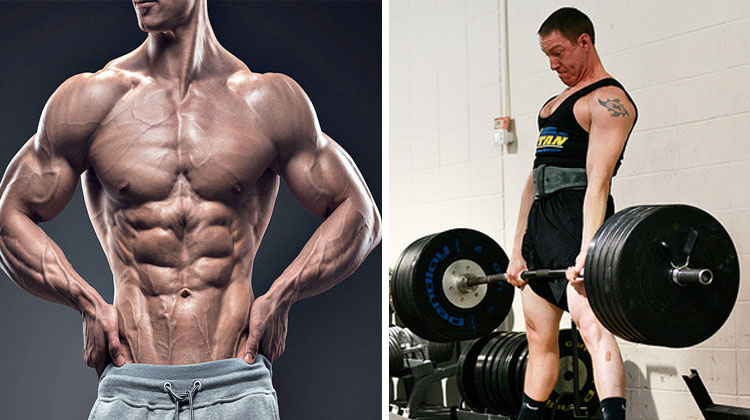
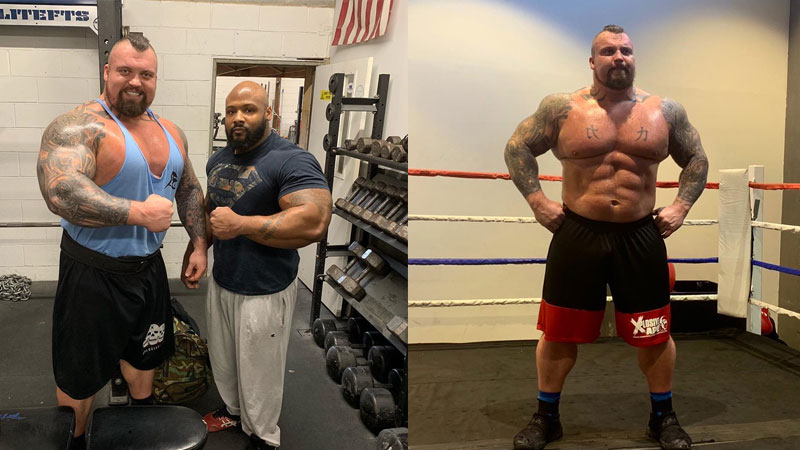
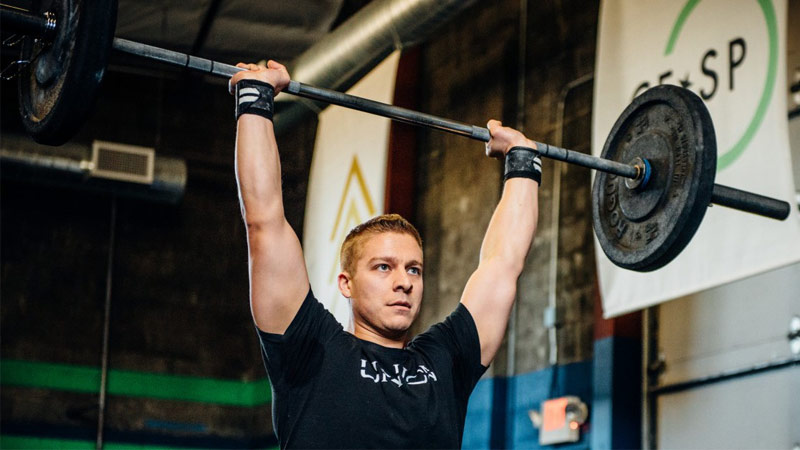

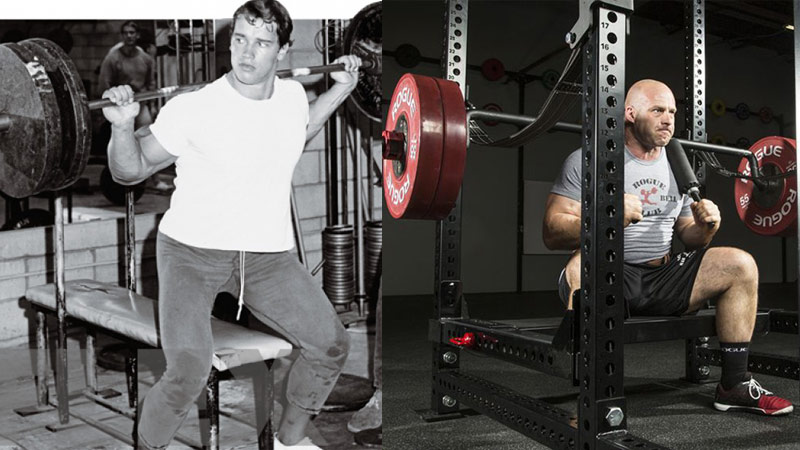
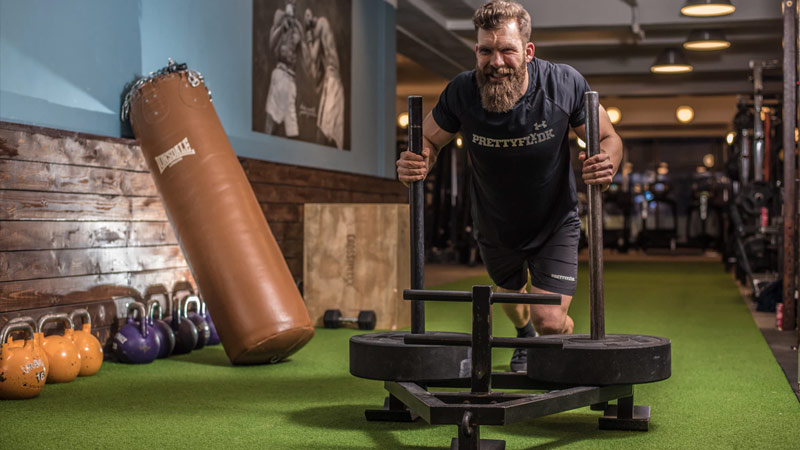
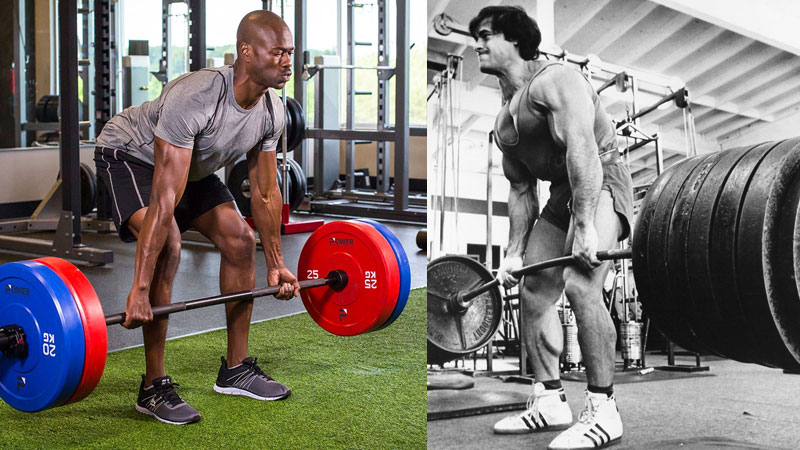
Photos would be helpful.